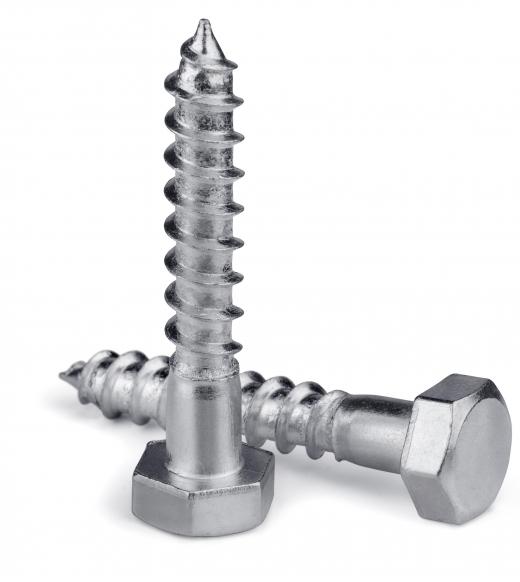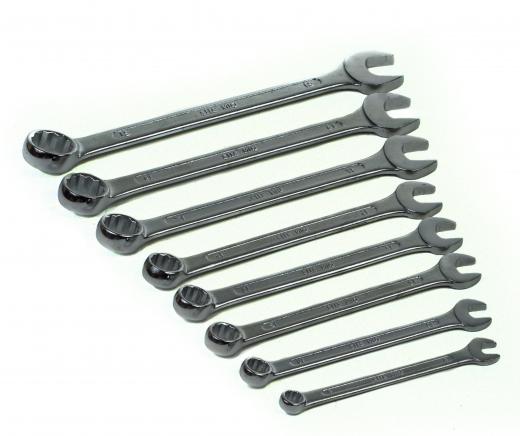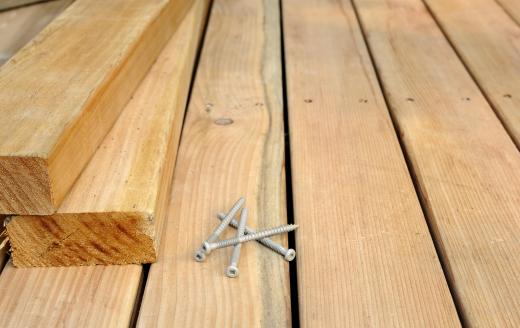Square head bolts are typically lag bolts. These lag bolts resemble very large screws and are used when assembling heavy lumber. The advantage in using square head bolts is that they can be tightened with an adjustable wrench. Using the wrench, the square head bolts are easily tightened in close quarters where other tools cannot be used. While lag bolts make up the majority of square head bolts, there are other types of bolts that share the square head design.
Often, bolts used in machinery utilize a square head. The placement of the fasteners in channel iron requires that the designer use square head bolts. The bolt is able to sit inside of the channel with the square head resting against the channel wall. This allows the bolt to be tightened without the need to hold the square head of the fastener.

The furniture industry is a major user of square head bolts. The bolts allow the furniture makers to use them in blind locations. A blind location is where the head of the bolt is not visible or reachable. The designers of the furniture provide wood to fit snugly against the sides of the square head bolts and often cut a recession into the wood to allow the bolts to fit snugly in. Another piece of wood is placed over the bolt, holding it securely in place. With the square head bolts held in place, the nuts can be tightened firmly, attaching the legs or other pertinent parts in position all without holding the head of the bolt.

In the early years of the railroad, fasteners with square heads were used to bolt the sections of rail together. By using a square head, the bolts could be tightened firmly without fear of rounding off the bolt head. Often using inferior labor, it was concluded that the square head would also fit snugly in the channel formed by the curve of the rail, making it easy to tell if the bolt was situated correctly. The square heads work so well with the rail that they are still used as the fastener of choice when laying or repairing rail.

Electrical connections are often made with square head nuts and bolts. The small size of the connections, as well as the confined spaces the connections are made in, requires a fastener that can be easily tightened and removed using only needle-nose pliers. Connections, such as wall outlets and light switches, enjoy the advantages that square head bolts provide when being used in close quarters.
